Table of Contents
- 1 What is Formal Communication?
- 2 Definition of Formal Communication
- 3 Types of Formal Communication
-
4 Advantages of Formal Communication
- 4.1 Increase Overall Efficiency
- 4.2 Manageable Communication System
- 4.3 Permanent Record
- 4.4 Rapid Accomplishment of Tasks
- 4.5 Maintenance of Discipline
- 4.6 Co-ordination and Integration
- 4.7 Augmentation of Knowledge
- 4.8 Development of Competencies and Abilities
- 4.9 Increase in Reliability and Accuracy
- 4.10 Formation of Sociable Terms among Members
- 5 Limitations of Formal Communication
- 6 FAQ Related to Formal Communication
What is Formal Communication?
When an organization communication occurs by following the prescribed or official or predetermined rules, policy and regulations of the organization are called formal communication. Formal communication is governed by the established chain of command.

Table of Contents
In other words, Formal communication refers to the flow of information in the formal organisational structure. It follows the chain of command of the formal organisation. Internal information is exchanged from one to another following the conventional rules. But this type of communication system may be used for both internal and external purposes.
Definition of Formal Communication
Some important definitional of formal communications are as follows:
According to Bartoal and Martin, “Formal communication refers to vertical and horizontal communication that flows path specified by the official hierarchical organizational structure and related task requirements.”
According to Bovee and his associates, “Formal communication is the flow of information that is dictated by the organization’s official structure.”
Types of Formal Communication
These are the following types of formal communication which are given below:
- Downward Communication
- Upward Communication
- Horizontal or Lateral Communication
- Diagonal Communication
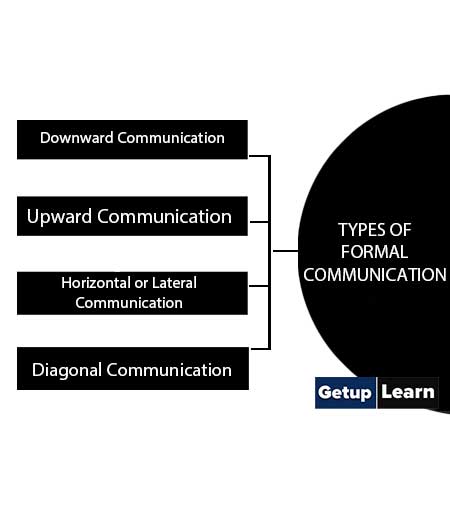
Downward Communication
Communication that flows from a higher level in an organization to a lower level is a downward communication. In other words, communication from superiors to subordinates in a chain of command is a downward communication. This communication flow is used by the managers to transmit work-related information to the employees at lower levels.
Employees require this information for performing their jobs and for meeting the expectations of their managers. Downward communication is used by the managers for the following purposes –
- Providing feedback on employees performance
- Giving job instructions
- Providing a complete understanding of the employees job as well as to communicate them how their job is related to other jobs in the organization.
- Communicating the organizations mission and vision to the employees.
- Highlighting the areas of attention.
Upward Communication
Communication that flows to a higher level in an organization is called upward communication. It provides feedback on how well the organization is functioning. The subordinates use upward communication to convey their problems and performances to their superiors.
The subordinates also use upward communication to tell how well they have understood the downward communication. It can also be used by the employees to share their views and ideas and to participate in the decision- making process.
Horizontal or Lateral Communication
Horizontal or lateral communication is established between individuals or departments located at the same hierarchical level. The role of this type is to facilitate the coordination of activities aimed at common objectives, excluding the intervention of senior managers.
Diagonal Communication
Diagonal communication is practiced in situations where members of the organization cannot communicate through other channels. For example, the use of project management, communications frequently occur in diagonals between the project team and the rest of the compartment structure.
Advantages of Formal Communication
The advantages of formal communication have been stated as follows:
- Increase Overall Efficiency
- Manageable Communication System
- Permanent Record
- Rapid Accomplishment of Tasks
- Maintenance of Discipline
- Co-ordination and Integration
- Augmentation of Knowledge
- Development of Competencies and Abilities
- Increase in Reliability and Accuracy
- Formation of Sociable Terms among Members
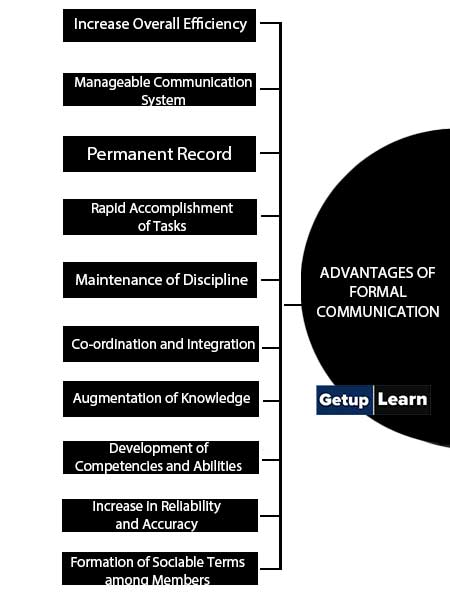
Increase Overall Efficiency
When the members of the organization generate awareness in terms of meaning and significance of formal communication, they are able to carry out their job duties and responsibilities in a manner that would lead to an increase in the overall efficiency. Therefore, it is one of the indispensable advantages of formal communication.
Manageable Communication System
The formal communication system is manageable, practicable and controllable by the individuals. When the subordinates are unable to acquire an efficient understanding of the aspects through a particular channel, then changes can be brought about. Therefore, it can be stated that formal communication system is manageable, practicable and controllable.
Permanent Record
In organizations, the document of formal communication is preserved as a hard copy and soft copy. In this manner, it is made use of, when the individuals need to refer to provide solutions to their problems. Therefore, permanent record is regarded as an indispensable advantage of formal communication.
Rapid Accomplishment of Tasks
Through formal communication, the individuals are able to receive support and assistance that would facilitate the rapid accomplishment of tasks. Whether it takes place in an oral or written form, the individuals are able to obtain adequate information that is crucial in the rapid accomplishment of tasks. Therefore, it is regarded as an important advantage of formal communication.
Maintenance of Discipline
Through formal communication, the members of the organization understand that in order to lead to effective functioning of the organization and achievement of organizational goals, they need to maintain discipline. When the individuals will carry out their tasks and activities efficiently and communicate well, they will be able to maintain discipline. Therefore, maintenance of discipline is an advantage of formal communication.
Co-ordination and Integration
In order to generate the desired outcomes and promote efficient functioning of the organization, it is vital for the members to work in co-ordination and integration with each other. Through formal communication, the individuals understand that they cannot work in seclusion and need to develop mutual understanding and work in co-ordination and integration with each other, hence these are regarded as an advantage of formal communication.
Augmentation of Knowledge
Through formal communication, the individuals are able to augment their knowledge and understanding in terms of methods, strategies and approaches that are necessary to carry out one’s job duties in a well-organized manner.
Furthermore, knowledge is made use of by the members in providing solutions to problems as well. Therefore, augmentation of knowledge is regarded as one of the primary advantages of formal communication.
Development of Competencies and Abilities
Through formal communication, the individuals receive assistance and support in development of competencies and abilities. In order to perform job duties in a well-organized manner and achieve professional as well as personal goals, it is vital for the individuals to develop competencies and abilities. This is facilitated through formal communication, therefore, it is regarded as one of the indispensable advantages.
Increase in Reliability and Accuracy
Through formal communication, the individuals are able to lead to an increase in reliability and accuracy. The members of the organization need to be reliable and accurate in their conduct as well as in the implementation of job duties. Ways and approaches that are necessary in leading to an increase in reliability and accuracy is acquired through formal communication. Therefore, it is regarded as a major advantage.
Formation of Sociable Terms among Members
The members of the organization need to form social terms and relationships with each other. These are necessary to perform one’s job duties well, achieve the desired outcomes, incur job satisfaction and enhance the structure of the organization.
Through formal communication, the individuals are imparted information in terms of this factor. Therefore, leading to formation of sociable terms among members is regarded as one of the crucial advantages of formal communication.
Limitations of Formal Communication
The limitations of formal communication have been stated as follows:
- Wastage of Time
- Delay in Decision Making
- Lack of Cordiality
- Inflexibility
- Costly
- Lack of Initiative
- Authoritarian Attitude
- Generates Misunderstandings
- Inability to Develop Motivation
- Delay in Achievement of Goals

Wastage of Time
When the directors or heads are to communicate with the workforce, they need to pass the information through various channels, which may be time consuming to a major extent. Hence, information may not be reachable in less amount of time. Therefore, wastage of time is regarded as one of the limitations of formal communication.
Delay in Decision Making
Through formal communication, the members may experience problems and challenges within the course of making decisions in a timely manner. When decisions are to be made on an immediate basis, there are occurrence of barriers. Therefore, delay in decision making is one of the limitations of formal communication.
Lack of Cordiality
In some cases, there is lack of cordiality in the implementation of formal communication. When the individuals in leadership positions are giving instructions or orders to their subordinates, they sound authoritarian and there is lack of cordiality. Therefore, lack of cordiality is regarded as one of the major limitations of formal communication.
Inflexibility
Formal communication is inflexible. When the individuals aspire to bring about changes in their viewpoints and perspectives that is not possible and information is unyielding. Hence, through this form of communication, one is unable to bring about changes. Therefore, inflexibility is one of the major limitations of formal communication.
Costly
In the system of formal communication, the rules and regulations of the organizations are to be followed in an appropriate manner. In some cases, it leads to creation of a critical situation. The cost involved in formal communication is regarded as one of the limitations as it is high as compared to other forms of communication.
Lack of Initiative
In some cases, the individuals are unable to develop initiative in their work, through the implementation of this form of communication. When there is lack of initiative, the individuals experience problems in the achievement of desired goals and objectives. Therefore, lack of initiative is regarded as one of the major limitations of formal communication.
The senders of information, particularly in the form of orders and instructions are superiors and receivers are subordinates. The subordinates cannot disobey the orders that are given to them by their superiors, hence, formal communication has an authoritarian attitude.
When the employees are over-burdened with job duties, then too they need to obey the orders given by their superiors. Therefore, authoritarian attitude is regarded as one of the major limitations of formal communication.
Generates Misunderstandings
When the subordinates are unable to acquire an efficient understanding of the information, they are not able to perform their job duties in accordance to the expectations of their superiors. In this manner, misunderstandings are generated. Therefore, it can be stated, one of the major limitations of formal communication is, it leads to generation of misunderstandings.
Inability to Develop Motivation
When the subordinates are unable to acquire an efficient understanding of the information that is communicated to them by their superiors, they are unable to develop motivation. Inability to develop motivation is regarded as one of the major impediments within the course of implementation of job duties. Therefore, it is regarded as a limitation of formal communication.
Delay in Achievement of Goals
Formal communication in some cases, gives rise to barriers within the course of achievement of goals. These are, inability on the part of the employees to understand the information, delay in making productive decisions, lack of motivation, interest and enthusiasm, misinterpretations and rigidity.
These factors causes delay in the achievement of goals. Therefore, delay in achievement of goals is regarded as one of the major limitations of formal communication.
What is formal and informal communication?
Formal communication is the flow of information that is dictated by the organization’s official structure. Informal communications are based on personal and informal relationships such as friends, peers, family, club members and so forth.
How many types are of formal communications?
Following types of formal communication which are given below: (1) Downward Communication, (2) Upward Communication, (3) Horizontal or Lateral Communication, (4) Diagonal Communication.

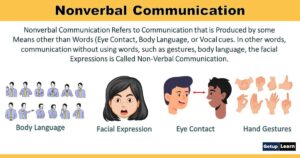



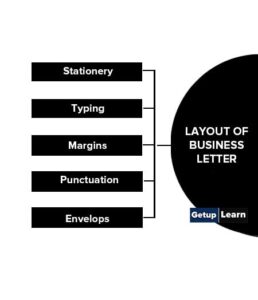

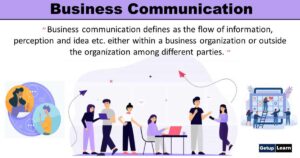
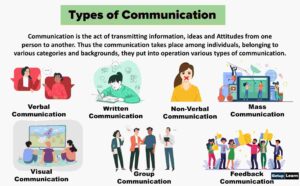

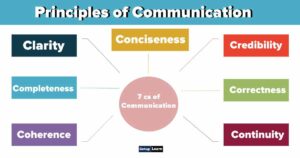





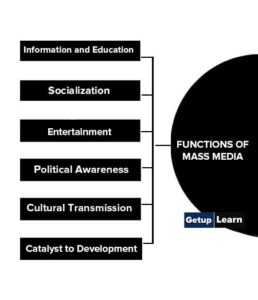

Well, l would say thanks very much to the entire team for providing such wonderful and educative material on the net. I actually learned a lot from it. Though there are concepts left out which were expected by me to be included of which you stated in your related post: elements of communication, principles of communication oral communication, organizational communication etc,but I’m kindly looking forward to seeing them soon on this same website. Thanks in advance????